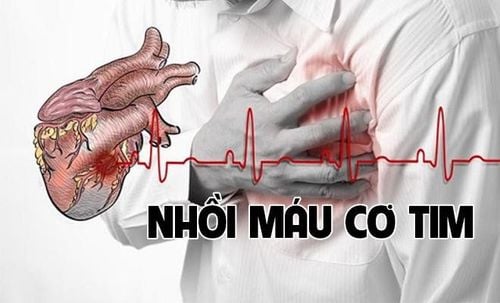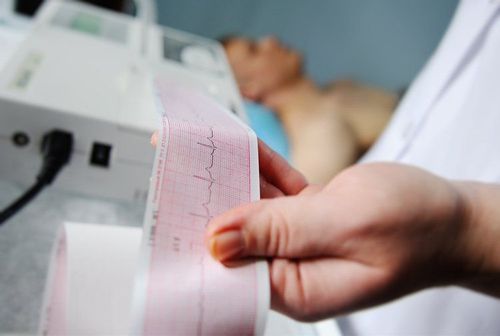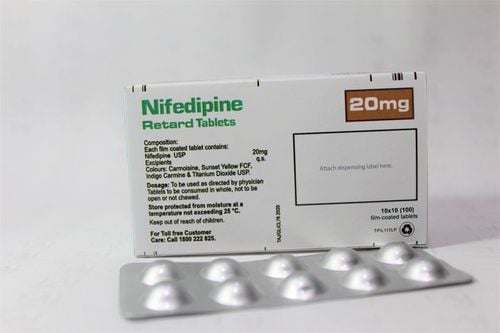This is an automatically translated article.
The article is professionally consulted by Master, Doctor Do Xuan Chien - Head of Department of Medical Examination & Internal Medicine and Professional Advisor, Department of Medical Examination and Internal Medicine - Vinmec Ha Long International Hospital.Myocardial infarction is one of the life-threatening heart diseases, the patient should be treated as soon as possible. Coronary intervention techniques in patients with myocardial infarction can be considered the most effective method today.
1. What is a myocardial infarction?
Myocardial infarction is an acute partial necrosis of the heart muscle caused by a lack of blood supply to an area of the heart muscle.
The cause of a heart attack is because one of the coronary arteries that feed the heart is blocked, because a blood clot forms in the coronary artery when the plaque ruptures, so the disease often occurs in the background. of pre-existing atherosclerotic coronary artery disease. In addition, a few cases, myocardial infarction can also be caused by coronary artery spasm, trauma, severe anemia, acute...
2. Who is at high risk of heart attack?
The incidence of myocardial infarction is highest in middle-aged and elderly men (over 40 years old). In postmenopausal women, age 60-65 years. Smokers, obesity, dyslipidemia, high blood pressure and diabetes. Family history of cardiovascular disease.

Yếu tố béo phì có thể làm tăng nguy cơ mắc bệnh nhồi máu cơ tim
3. Symptoms of a heart attack
The most typical and common symptom of a heart attack is angina in the chest. Heart attacks will last longer than regular angina. In particular, in the left chest position with pain like being pinched, squeezed in the middle of the chest, taking place for about 5-30 minutes. The pain can radiate to the shoulder, neck, jaw or along the arm, especially the left hand. Sweating, nausea, dizziness, shortness of breath. There are a few cases of myocardial infarction presenting as a digestive disorder. Or even very sudden pain, manifested by complications of arrhythmia, cardiac arrest or sudden death...
4. Diagnosis of myocardial infarction
Due to the common nature, life-threatening and rapid progression of the disease, before the treatment of myocardial infarction, the patient must be correctly diagnosed. The following are the diagnoses of myocardial infarction:
Diagnosis of myocardial infarction is based on the characteristics of angina pectoris, changes in the electrocardiogram, changes in the concentration of cardiac enzymes in the blood occurring during tracking process. In some cases, it is necessary to closely monitor with electrocardiogram and measure cardiac enzymes in the blood, the interval between each time is up to 6 hours. For patients at high risk of complications such as: cardiogenic shock, severe heart failure, arrhythmia..., coronary angiography should be taken immediately to get an accurate diagnosis and apply timely treatment measures. .
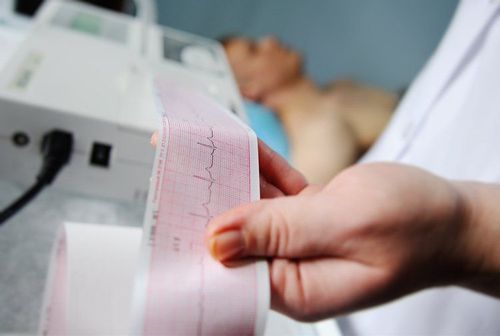
Người bệnh rối loạn nhịp tim thuộc nhóm có nguy cơ cao biến chứng nhồi máu cơ tim
Patients in doubtful state can use some other diagnostic measures such as echocardiography, stress testing, myocardial perfusion scintigraphy... depending on the case before angiography. rim.
5. Treatment of myocardial infarction at the hospital
Once the diagnosis is confirmed as having a myocardial infarction, the patient will receive closer care at the bedside.
5.1 Initial treatment Continuous ECG monitoring at bed, regular blood pressure measurement Establish an intravenous line. Oxygen Breathing Take coronary vasodilators, drugs to slow the heart rate and stabilize the heart, antiplatelet drugs.. If the patient still has a lot of pain, the doctor will use strong pain relievers.
5.2 Follow-up treatment: Coronary intervention in patients with myocardial infarction Myocardial infarction is a rapid emergency. The general rule of thumb is to reestablish blood flow in the occluded coronary artery as soon as possible in order to maximize the salvage of the ischemic stroke of the myocardium interspersed with areas of myocardium that have died of ischemic necrosis. blood. Coronary outflow can only be restored when the clot is removed with thrombolytics or using percutaneous coronary angiography and interventions such as balloon angioplasty and or intraluminal stenting. combined with aspiration to remove blood clots... Very small percentage of blood clots dissolve on their own and most need to be intervened.
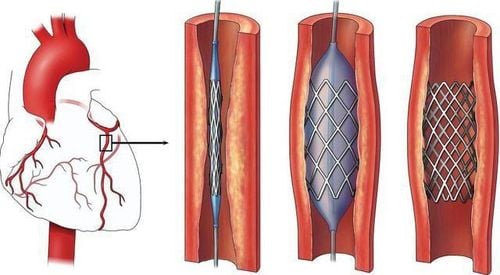
Kỹ thuật đăt bóng stent mạch vành
However, the effectiveness of these measures is highly dependent on the duration of treatment,
Clotolytics are really beneficial when taken within 2 to 4 hours of the onset of the disease. Percutaneous coronary intervention is also most effective when performed within 12-18 hours of disease onset. In a certain proportion of late cases where the above methods are not suitable, emergency coronary artery bypass grafting is the last resort to save the patient's life, although the success rate in the acute stage is not high.
6. How to prevent heart attack
Quit smoking completely. Eat less fat (eggs, butter, fat, cheese, skin, animal organs), eat more fruit, Lose weight if you are overweight, strictly control blood pressure and blood sugar within permissible limits, Fitness exercise regularly every day. Myocardial infarction is just an unwanted event, an acute manifestation of a potentially insidious atherosclerotic process. Currently, coronary intervention is an effective method in the treatment of patients with myocardial infarction. Therefore, if a heart attack is diagnosed, the patient should be treated as soon as possible before the disease causes life-threatening complications.
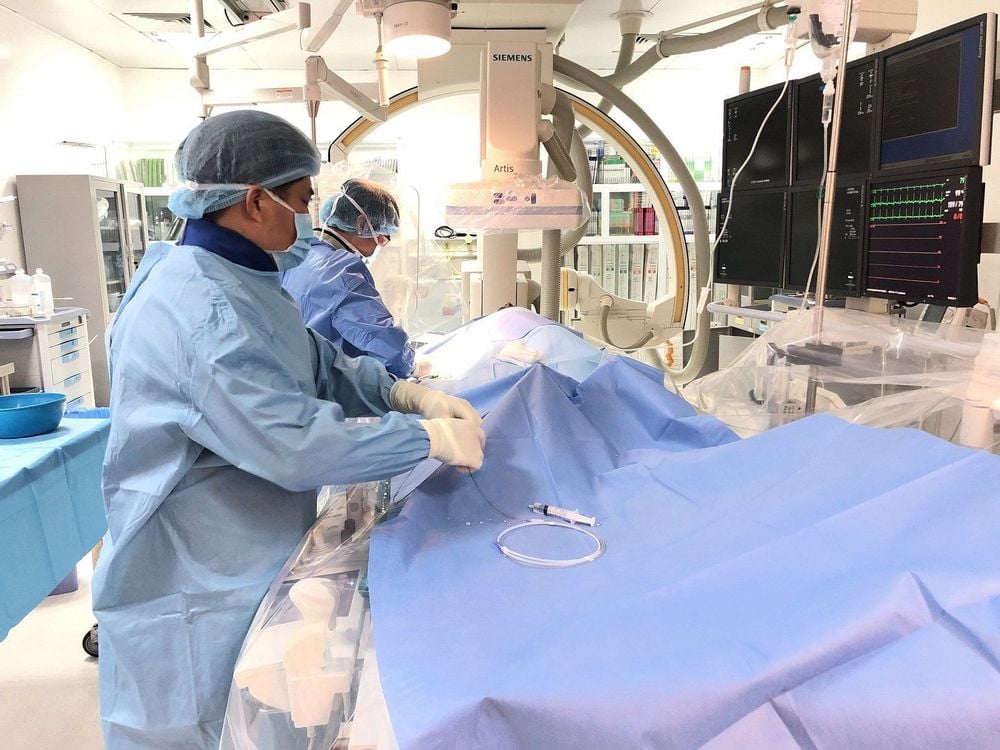
Bệnh nhân được can thiệp tim mạch tại Bệnh viện Vinmec
Associate Professor. Dr. Hoang Dang Mich has over 42 years of medical practice, has strengths in the specialized fields of Liver - Kidney - Immune pathology... Currently, he is a Specialist Consultant in General Internal Medicine Department of Examination. Medicine & Internal Medicine, Vinmec Ha Long International General Hospital.
Any questions that need to be answered by a specialist doctor as well as customers wishing to examine and treat at Vinmec International General Hospital, you can contact Vinmec Health System nationwide or register online HERE.







